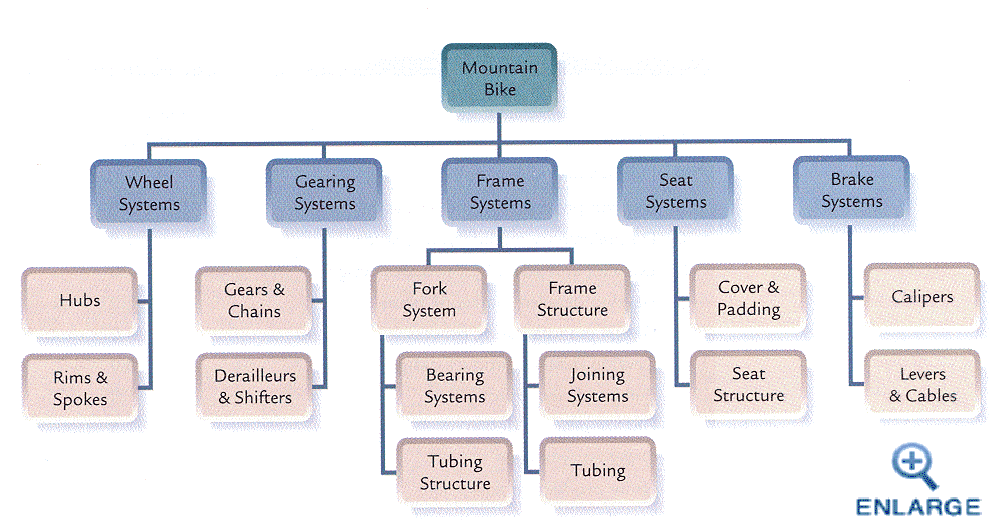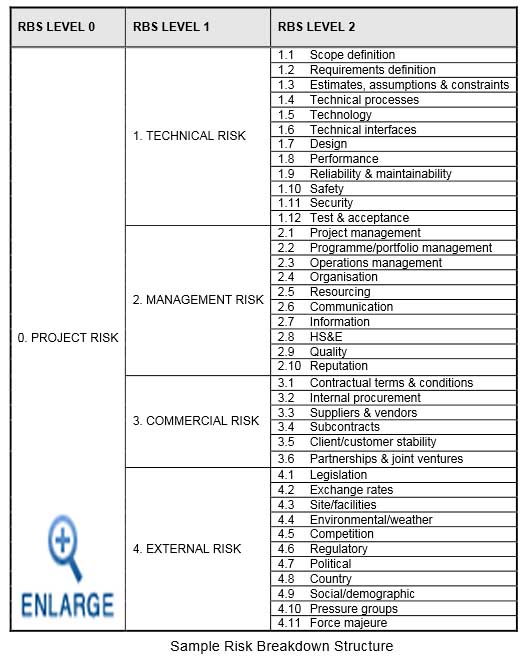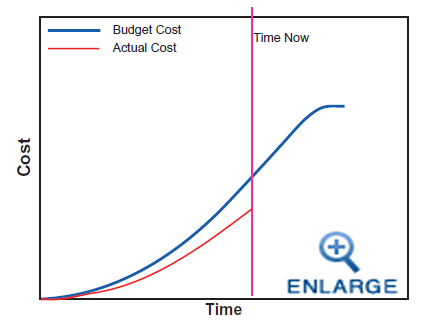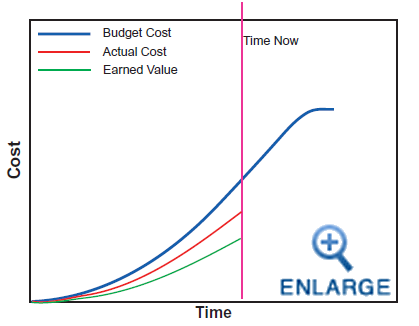How to prevent project failure
Milos Bucalo | Dr. Sauter | IS 6840 | November 18, 2013
Intro


The most recent failure happened in the United Kingdom. In 2008, the British Broadcasting Corporation, better known as BBC, started a project named “Digital Media Initiative.” The Digital Media Initiative was created as a project that would, “… allow BBC staff to access the entire archive from their computers, doing away with the need for audio and video tapes. It was expected to save the corporation £18million in production costs because staff could share and download material remotely instead of transporting tapes between headquarters,” [3]. Conlan says during coverage of Baroness Thatcher's funeral, major problems occurred with the system [4]. These problems were the last “straw that broke the camel's back” and led the Digital Media Initiative to be abandoned in May 2013, with costs of £98 million ($157 million) in approximately five years [3]. The key reasons why this project failed were poor communication, poor management, and bad decision making. However, there are numerous ways and steps to prevent project failure. This paper focuses on five important steps to prevent overall project failure which include establishing a good team, strategic planning, identifying all risks, proper controlling and tracking methods, and having excellent communication skills.
The Squad
Before a project can commence, it is important to create a dynamic project team, something similar to the Chicago Bulls 1996-1997 team. A project team should consist of a mix of business professionals that will combine their experience professionally along with individuals with no experience. This way, it is easy to combine experienced professionals with “young blood” ready to prove themselves. According to Suchan choosing a right team isn’t always easy. A lot of factors are taken into consideration when determining a potential member for a project team [19]. Suchan identifies several important aspects that every project leader should keep in mind, including: the skills required by members to complete project tasks, members’ level of influence, members’ access to networks or other resources, members’ ability to effectively participate, and the ability to work well in a team environment [19]. Depending on the size of the project, the team can vary in size. Hence, it is important for every project team to identify the members’ roles in the team. According to Dr. Meredith Belbin, an American psychologist who authored the 1993 teambuilding book, “Team Roles at Work,” the project team should have the following nine key roles [5]:

- The Plant: is a creative individual who produces thoughts.
- The Monitor Evaluator: is a person who weighs up the usefulness of ideas.
- The Co-ordinator: is a person who verifies the team is on the same page.
- The Resource Investigator: is a person who possesses good networking skills.
- The Implementer: is a person who possesses skills to turns thoughts into results.
- The Completer-Finisher: a person who makes sure all issues are resolved.
- The Teamworker: a person who makes sure everything works perfectly.
- The Shaper: is a type who makes sure the team is on the right track.
- The Specialist: is an individual with high-quality skills.
Though it is important that all members of a program are attached to the project in all aspects of the project, every member must keep in mind the ultimate goal of what the project will look like when it gets finished. Together, the project team needs to be on the same page and ensure that everyone moves toward the ultimate goal of creating and finishing the project. Hence, when the project team is established and finalized, the next step is to start creating a plan to prevent overall project failure.
Planning
Planning is a crucial stage of all projects because most companies do not give the planning stage the full attention needed and do not develop a right plan from the beginning. According to Dr. Salama, planning can be described as “a projected or predetermined course of action designed to achieve a specific goal or objective,” [20]. The main key to successful planning is to have a project manager. According to Hoffer, George and Valacich, “…the project manager is a systems analyst with a diverse set of skills – managing, leadership, technical, conflict management, and costumer relationship – who is responsible for initiating, planning, executing, and closing down a project” [6]. From the beginning, a project team must narrow down a list of goals [21]. Furthermore, to narrow down goals, some project teams use a systems engineering or project managing term known as the work breakdown structure (WBS), which is “a deliverable-oriented grouping of project components that helps organize and define a project’s total scope of work” [7]. When the work breakdown structure is created, the next move is to estimate the project schedule and the overall cost of the project.
To estimate the cost and schedule of a project, the best way to go about this problem is to look at similar projects that the company has completed work on [21]. If a similar project completed has failed, it is important to determine why it failed. This way, the company can have the right idea of how much time and money needs to be budgeted. In addition, time is sensitive and a crucial part of project planning and managing. Without an estimated timeframe, the project team will not know how long the project will last. Back in 2007, Tata Consultancy Services (TCS), one of Asia's largest software corporations, conducted research on worldwide IT failure. The research was based off 800 interviews of middle and senior IT managers [8]. The results of the research showed that 62% of companies faced IT projects that failed due to being “overrun on time” [8]. However, planning a budget for a project is very important too. According to Walker, a budget can be defined as “quantitative expression of a plan for a defined period of time. It may include planned sales volumes and revenues, resource quantities, costs and expenses, assets, liabilities and cash flows,” [9]. Whitfield points out research that the European Services Strategy Unit obtained based on 105 outsourced public sectors. The results showed that Information and Communication Technology (ICT) projects continued despite significant cost overruns, delays and terminations. The average percentage of cost overrun is 30.5% [10]. As soon as the plan of the project is created, it is vital to get it revised by the entire team. The team members should point out their thoughts and objections about the project plan. One good way to do this is to present visually on the board or through PowerPoint. This way the risks can be pointed out.
Risk
Risk is an inevitable part of every project. Furthermore, risk is the part of projects to which project teams usually do not give full consideration. This is not good for projects, because giving full consideration to all risks will not hurt the project; as a matter of fact, it will make it better. Hence, a risk in the project management context is defined as “the process of identifying, analyzing and responding to risk factors throughout the life of a project and in the best interests of its objectives” [23]. By identifying project risks and potential issues at the earliest stages of a project, a project team can avoid risks through corrective actions and have the ability to handle them. When the project team identifies risks and potential issues of a project, the project team needs to classify them. After classifying the risks and potential issues, it is important to know how to address them.

1. Avoid risk: is the best way to resolve a risk. It is simple to change plans to eliminate the risk.
2. Mitigate risk: is to reduce the chance of the risk occurring, or to make sure that damages that happened do not leave a significant consequence on the project.
3. Transfer risk: is to outsource risk. For the most part this is done through insurance.
4. Accept risk: the only thing that is left is to accept possibility of negative consequence.
Companies that are dealing with a complex project will use a risk management plan. A risk management plan is a document that a project manager prepares to predict risks, estimate possible impacts, and define responses to issues. Another good way to handle a risk is by using a Risk Breakdown Structure. According to Holzmann and Spiegler, “The RBS is a hierarchical structure that represents the overall project and organizational risk factors and events organized by group and category,” [12]. Holzmann and Spiegler pointed out, “the items in the RBS are exhaustive and mutually exclusive so that each one of the identified risks can be assigned only to a single item and cannot be allocated to more than one item” [12]. After the risk breakdown structure, it is crucial to stay on top of the project. A good way to say on top of the project is with controlling and tracking.Controlling and Tracking
It is significant to use the controlling and tracking process to help the project team know that the project is proceeding according to the plan, and if any problem occurs during that period, the project team can act and save the project. The controlling and tracking process manages all the tasks required to guarantee that the project is within scope, on time, and within the budget so that the project continues with a marginal threat of failure. This practice accommodates matching definite work with scheduled work and compelling curative processes to crop the desired outcome when a major difference occurs. Controlling and Tracking processes are always repeated all the way through the project. One of the best ways to track and control a project is to use the Earned Value Management (EVM) or Earned value project/performance management (EVPM). For tracking and controlling a project performance and development, EVM is well known managing method. Garret stated that EVM is “a widely accepted industry best practice for project management, which is used across the U.S federal government and the commercial sector” [13]. Garret also points out the five main categories of Earned Value Management (EVM): organization, planning, scheduling and budgeting, accounting, analysis and management reporting, and revisions and data maintenance [13]. According to James, it is important to understand three earned value terms before using Earned Value Management: planned value or VP (money that should have been spent as per the schedule), actual cost or AC (amount of money actually spent during a task or project performance—amount paid for labor, materials, and other costs), and earned value or EV (sum of estimated costs of tasks that have been completed) [16]. In addition, Weaver gave good examples of project tracking with and without earned value.
From figure 1 it shows blue and red lines which symbolizes the cumulative budget cost (the blue line) and cumulative actual cost (red line) for this project. The budget cost can be identified as planned value (PV). Furthermore, the information present on this figure shows that the cost of this project will be under budget, though figure 1 shows a small amount of information of how much work has been completed. This segment is very important because with a small amount of information shown, the project team or project managers cannot tell for sure if the project is running under or over budget. To resolve this issue, the project team or the managers need to add Earned Value information [24]. Consider the same project (see Figure 2), but this time the graph includes the earned value (green line). Closely, it can be noticed that the earned value (green line) is under the actual cost (red line), which means that the project is expending more than was budgeted and it is running over budget. Also, the earned value is under the budgeted cost (blue line), which means that the project is running behind schedule. This very important information could not be seen from Figure 1 [24].Communication

- Communication planning – are processes that are concerned with determining who to target, when is a good time, with what key message, and how that message will be sent.
- Information distribution – is gathering required facts available to the project team within a reasonable time frame.
- Performance reporting – is a report on the performance of generating and gathering the facts. This consists of status reports, progress measurement, and calculating.
- Administrative closure – is about gathering and documenting project results.
Outro
Project after project, there are areas that will still continue to fail. But there is “the cure” to prevent it. The secret ingredient is to choose a dynamic team that will create a good, realistic plan with the right amount of information and detail, and then make sure to identify and face all risks at the earliest stage of a project. The project team should also make sure that the project is on the right track, and maintain a good communication throughout the whole project. This “secret” ingredient would have helped the people from Denver International Airport with their automated baggage system project, and it would have helped the BBC with their Digital Media Initiative. In the final analysis, with the right group of people that create a good strategy, detect risks, and communicate freely, the margin for failure will be small.
References
1. ^ De Neufville, Richard. (1994). The Baggage System at Denver: Prospects and Lessons.![]() Journal of Air Transport Management. Vol. 1. Page(4). Retrieved September 30, 2013.
Journal of Air Transport Management. Vol. 1. Page(4). Retrieved September 30, 2013.
2. ^ hikaru1620. (2010, August 23). MSNBC on Denver's Automated Baggage System.![]() Retrieved September 30, 2013.
Retrieved September 30, 2013.
3. ^ a b Glennie, Alasdair. (2013, May 13). £100m debacle at BBC: After years of waste and chaos, failing IT scheme is finally axed by humiliated corporation.![]() Dailymail. p 6-7. Retrieved September 30, 2013.
Dailymail. p 6-7. Retrieved September 30, 2013.
4. ^ Conlan, Tara. (2013, August 21). BBC boss in charge of Digital Media Initiative got £140,000 in bonuses. ![]() Theguardian. p 12. Retrieved September 30, 2013.
Theguardian. p 12. Retrieved September 30, 2013.
5. ^ Belbin, Meredith. (2012). Belbin Team Roles. ![]() Belbin. Retrieved October 1, 2013.
Belbin. Retrieved October 1, 2013.
6. ^ Hoffer, Jeffrey A., George, Joey F., Valacich Joseph S. (2010, January 13). Modern Systems Analysis and Design.![]() New Jersery: Prentice Hall; 6 edition.
New Jersery: Prentice Hall; 6 edition.
7. ^ Malone, Bradley A. (2012, July 1). Work Breakdown Structure.![]() Sound & Video Contractor. Vol. 30 Issue 7, p82-82. 1p. Retrieved October 2, 2013.
Sound & Video Contractor. Vol. 30 Issue 7, p82-82. 1p. Retrieved October 2, 2013.
8. ^ a b Tata Consultancy Services. (2007). IT Projects: Experience Certainty.![]() Independent Market Research Report. Abergavenny, UK: Dynamic Markets Limited Retrieved October 3, 2013.
Independent Market Research Report. Abergavenny, UK: Dynamic Markets Limited Retrieved October 3, 2013.
9. ^ Ross, Louise., Technical Information Service.(2008). Budgeting.![]() Topic Gateway Series No.27. London, UK: CIMA Publishing Retrieved October 3, 2013.
Topic Gateway Series No.27. London, UK: CIMA Publishing Retrieved October 3, 2013.
10. ^ Whitfield, Dexter. (2007). Cost overruns, delays and terminations: 105 outsourced public sector ICT projects.![]() ESSU Research Report No. 3. Retrieved October 3, 2013.
ESSU Research Report No. 3. Retrieved October 3, 2013.
11. ^ Fragnière, Emmanuel, & Sullivan, George. (2006). Risk Management: Safeguarding Company Assets.![]() Boston, MA: Crisp Learning; 1 edition.
Boston, MA: Crisp Learning; 1 edition.
12. ^ a b Holzmann, Vered., & Spiegler, Israel. (2011). International Journal of Project Management.![]() Volume 29, Issue 5, July 2011, Pages 537–546. Retrieved October 3, 2013.
Volume 29, Issue 5, July 2011, Pages 537–546. Retrieved October 3, 2013.
13. ^ a b Garrett, Gregory A. (2006). Earned Value Management.![]() Contract Management. Retrieved October 3, 2013.
Contract Management. Retrieved October 3, 2013.
14. ^ Harrington, H. James, & McNellis, Thomas. (2006, May 10). Project Management Excellence: The Art of Excelling in Project Management.![]() Chico, CA: Paton Press.
Chico, CA: Paton Press.
15. ^ a b Newton, Richard. (2010, January 21). The Project Manager: Mastering the Art of Delivery.![]() Harlow, UK: FT Press
Harlow, UK: FT Press
16. ^ Taylor, James. (2008). Project Scheduling and Cost Control: Planning, Monitoring and Controlling the Baseline.![]() Ft. Lauderdale, Fla : J. Ross Pub. Retrieved October 3, 2013.
Ft. Lauderdale, Fla : J. Ross Pub. Retrieved October 3, 2013.
17. ^ (n.d). HP Diversity: Open Door Policy.![]() Hp. Retrieved October 4, 2013.
Hp. Retrieved October 4, 2013.
18. ^ a b Rosencrance, Linda. (2007). Survey: Poor communication causes most IT project failures.![]() Computerworld. p2. Retrieved October 4, 2013.
Computerworld. p2. Retrieved October 4, 2013.
19. ^ a b Suchan, Jane.(n.d) Build effective project teams.![]() office.microsoft. p3. Retrieved October 4, 2013.
office.microsoft. p3. Retrieved October 4, 2013.
20. ^ Salama, Rasha (2005). Principles of Health Administration ![]() [PowerPoint slides]. Retrieved October 4, 2013.
[PowerPoint slides]. Retrieved October 4, 2013.
21. ^ a b c James Palmer Lewis. (2012, March 8). Major Causes of Project Failure and How to Prevent Them.![]() Retrieved October 9, 2013.
Retrieved October 9, 2013.
22. ^ a b Rai, Urmila, Rai, S.M. (2009). Effective Communication.![]() Mumbai, IND Retrieved October 9, 2013.
Mumbai, IND Retrieved October 9, 2013.
23. ^ Stanleigh, Michael.(n.d). Risk Management...the What, Why, and How.![]() bia. Retrieved October 30, 2013.
bia. Retrieved October 30, 2013.
24. ^ a b Weaver, Pat (2003). An Introduction to Earned Value Performance Management.![]() mosaic project services pty. Retrieved October 3, 2013.
mosaic project services pty. Retrieved October 3, 2013.



